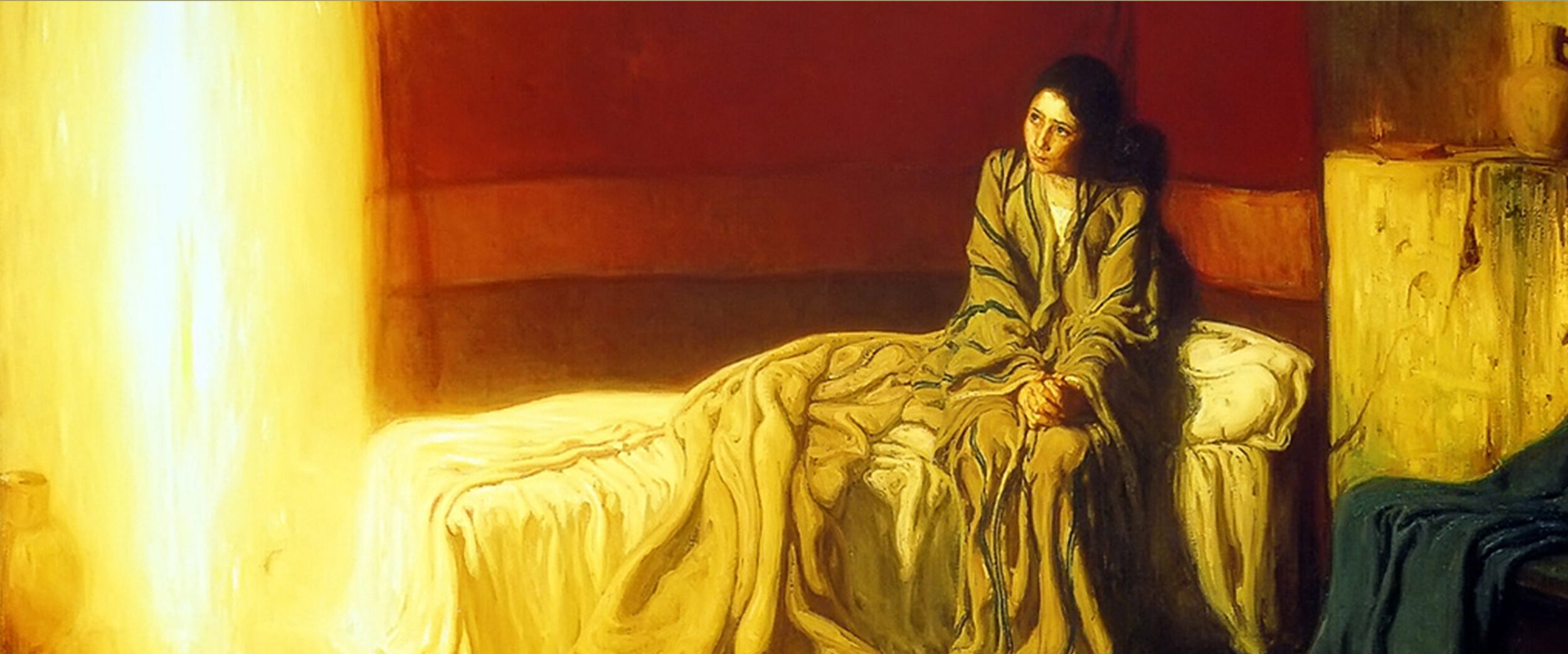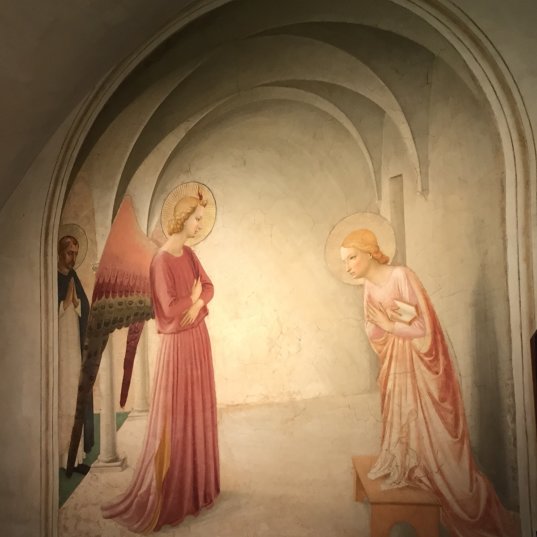
In the sixth month the angel Gabriel was sent from God to a city of Galilee called Nazareth…
Luke is the master of the velvet glove. The telling is so lyrical that you almost don’t feel the punch. But…Galilee, after all; Nazareth? What is an angel of God doing here? “Can anything good,” Nathaniel will say in John’s gospel, “come out of Nazareth?” This is the Judean hinterland, and it is not supposed to be the centre of God’s salvation.
To Nazareth nevertheless the announcing angel goes, to a young woman betrothed to a man whose name was Joseph, of the house of David, and the name of the young woman was Mary.
Mary. Mariam, in Luke’s Greek.
Again, the punch: because Mary is nobody, but Mariam is the name of the sister who hid and saved the child who would lead Israel out of bondage into the promised land, Mariam sister of Moses, Mariam who watched over her brother and kept him safe; Mariam who sang the Bible’s oldest song of salvation.
Sing to the Lord, for he has triumphed gloriously; Horse and rider he has thrown into the sea.
(Exodus 15:21)
This is, Luke is telling us, the story of salvation.
God’s saving work, drawing his people out of bondage, drawing his people back to him, the work begun in Abraham and Moses and Mariam, comes now to a point in another Mariam, this young woman we call Mary.
Do not fear, Mary, for you have found favour with God. And behold you shall conceive in your womb and bear a son, And you shall call his name Jesus. He will be great and will be called the Son of the Most High. And the Lord God will give to him the throne of his father David.
To Mary, the angel announces the salvation of God, and asks Mary to have a part in it. This great news of salvation, the hope of all Israel, the hope of the world, comes first to one young woman betrothed to a man named Joseph in the small town of Nazareth. “Greetings, highly favoured one,” the angel says to Mary. “The Lord is with you.”
The Lord is with you. With you, Mary, in particular. God knocks at the door of your heart.
The Word is very near you, on your lips and in your heart.
The Word is very near, a child to be carried and birthed, this child whose name is Jesus, Saviour, Prince of Peace.
What say you, Mary, to this grace of God?
There’s a wonderful painting of this scene by an American artist, Henry Ossawa Tanner. In it, Mary sits up in bed. She is very young; she wears a plain brown robe and sits in a plain small room. But in that room there is such a light, pushing back the darkness, announcing the messenger of God. Here it is, the mystery of this moment of God’s grace: that it should touch this girl, this ordinary night; that this should be the place of God’s grace. She is just a girl. And she has been touched by an enormous salvation. Hail Mary, full of grace. The Lord is with you.
It should not be possible—for her, or for any of us. Mary says, “How can this be?” How can the promise come to birth? And she is quite right. All through the scriptures it is repeatedly not possible; the woman is barren or too old; the king is not faithful, the first man and woman turn away from the walk with God. Always the human being is incapable of bringing the word to birth. How shall the promise be fulfilled?
And the angel said to her, “The Holy Spirit will come upon you, and the power of the Most High will overshadow you, and the child to be born shall be called Holy, the Son of God.”
It is not possible for Mary on her own, any more than it was possible for Mariam or Sarah or Abraham or Adam or even David to bring God’s kingdom to birth.
But God chooses her anyway. He blesses her. He touches her with grace. Greetings, blessed one, the angel says to Mary; the Lord is with you.
It is the first thing the angel says to her, this news of blessing, the human person in this young woman caught up into the action of God’s grace.
And Mary says yes. “Here am I,” Mary says, “the servant of the Lord. Let it be with me according to your word.”

On my desk I have another painting of the annunciation, this one by Fra Angelico. It is not the famous one, the angel with the glorious wings that takes your breath away as you come to the top of the steps in the monastery of San Marco. It is a smaller one, and quieter, and it hangs in San Marco in one monk’s cell. (You can see the monk in the background, looking on). In it the angel stands and Mary kneels slightly. She is listening, and as she listens she bends her head, assenting. The angel speaks the Great Word of God’s Salvation, and Mary says Yes. And they are face to face.
Let it be with me according to your word. Grace and obedience, God and the woman, now again face to face. This is the day of hope. That we too may turn again. That we may find in obedience the way of grace.
May it be with me according to your word. Mary goes before us and shows us the way.
Collect for the Annunciation
We beseech thee, O Lord, pour thy grace into our hearts, that we who have known the incarnation of thy Son Jesus Christ, announced by an angel to the Virgin Mary, may by his cross and passion be brought unto the glory of his resurrection; who liveth and reigneth with thee, in the unity of the Holy Spirit, one God, now and forever. Amen.
